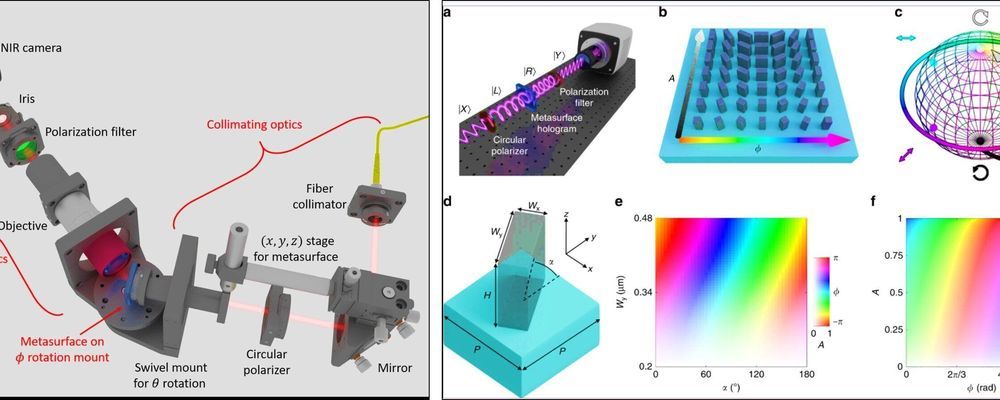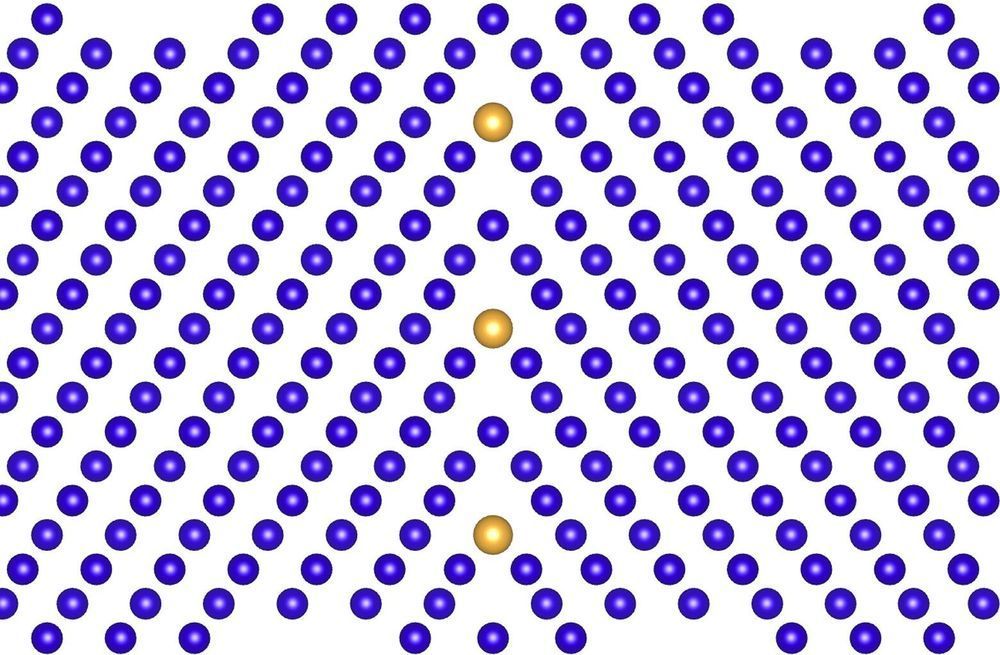
Metasurfaces are optically thin metamaterials that can control the wavefront of light completely, although they are primarily used to control the phase of light. In a new report, Adam C. Overvig and colleagues in the departments of Applied Physics and Applied Mathematics at the Columbia University and the Center for Functional Nanomaterials at the Brookhaven National Laboratory in New York, U.S., presented a novel study approach, now published on Light: Science & Applications. The simple concept used meta-atoms with a varying degree of form birefringence and angles of rotation to create high-efficiency dielectric metasurfaces with ability to control optical amplitude (maximum extent of a vibration) and phase at one or two frequencies. The work opened applications in computer-generated holography to faithfully reproduce the phase and amplitude of a target holographic scene without using iterative algorithms that are typically required during phase-only holography.
The team demonstrated all-dielectric metasurface holograms with independent and complete control of the amplitude and phase. They used two simultaneous optical frequencies to generate two-dimensional (2-D) and 3D holograms in the study. The phase-amplitude metasurfaces allowed additional features that could not be attained with phase-only holography. The features included artifact-free 2-D holograms, the ability to encode separate phase and amplitude profiles at the object plane and encode intensity profiles at the metasurface and object planes separately. Using the method, the scientists also controlled the surface textures of 3D holographic objects.
Light waves possess four key properties including amplitude, phase, polarization and optical impedance. Materials scientists use metamaterials or “metasurfaces” to tune these properties at specific frequencies with subwavelength, spatial resolution. Researchers can also engineer individual structures or “meta-atoms” to facilitate a variety of optical functionalities. Device functionality is presently limited by the ability to control and integrate all four properties of light independently in the lab. Setbacks include challenges of developing individual meta-atoms with varying responses at a desired frequency with a single fabrication protocol. Research studies previously used metallic scatterers due to their strong light-matter interactions to eliminate inherent optical losses relative to metals while using lossless dielectric platforms for high-efficiency phase control—the single most important property for wavefront control.


















